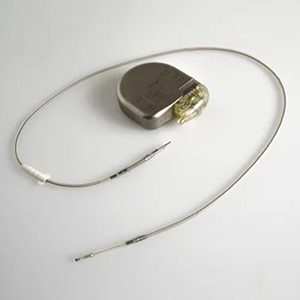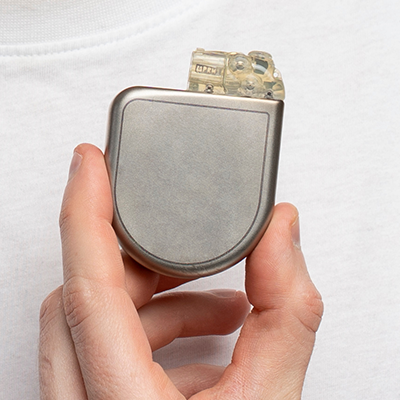
Heartbeat of Tomorrow: ICD and CRT-D Devices Redefining Heart Attack Care
Cutting-Edge Technology: How ICD and CRT-D Devices Are Revolutionizing Heart Attack Treatment
12 Jun 2024
In a world where technology continually advances, it’s no surprise that the medical field is keeping pace with innovations that can save lives. Heart attacks, or myocardial infarctions, are a significant health concern in India, affecting a substantial portion of the population. While the causes of heart attacks are well-known, recent breakthroughs in technology have introduced new hope for patients and medical professionals. In this article, we will explore how cutting-edge ICD and CRT-D devices are revolutionizing heart attack treatment in India, offering a ray of hope to those at risk.
Understanding the Threat: Heart Attacks in India
Heart attacks, also known as myocardial infarctions, are a significant concern in India. The risk factors for heart attacks are well-documented and include lifestyle choices, genetics, and underlying health conditions. But let’s delve into the stark reality of heart attacks in India by shedding light on the trending causes that are making this ailment increasingly prevalent:
Now that we have a clearer picture of the factors contributing to heart attacks in India, let’s shift our focus to the innovative solutions that are changing the landscape of heart attack treatment - ICD and CRT-D devices.
Heart Attack Treatment with Heart Attack Survivors
In the Indian context, ICDs are offering new hope to patients with heart issues. They provide an extra layer of protection, ensuring that even if a heart attack does occur, the chances of survival are significantly enhanced. These devices can detect irregular heartbeats and intervene swiftly, potentially preventing a fatal outcome.
An essential aspect of ICD technology is its ability to store data about a patient’s heart rhythms over time. This data can be retrieved and analyzed by healthcare professionals to tailor treatment and medication plans to the individual patient. This level of personalization is invaluable in the treatment of heart attack survivors.
Secondly, the CRT-D device incorporates a defibrillator, similar to the ICD. It can detect and treat potentially life-threatening arrhythmias, delivering an electric shock when needed. This dual functionality can significantly enhance the quality of life for patients suffering from heart conditions.
In India, where heart diseases are on the rise, the CRT-D technology is a game-changer. It not only increases the chances of survival in case of a heart attack but also offers a better quality of life for those living with chronic heart conditions.
Advantages of ICD and CRT-D Devices for Heart Treatment
- Early Detection and Intervention:
ICD and CRT-D devices are programmed to detect irregular heart rhythms, which can be early indicators of a heart attack. This early detection allows for timely intervention, potentially saving lives.
- Data-Driven Personalization:
The data collected by these devices are used by healthcare professionals to tailor treatment plans for catering to the specific needs of the patient, ensuring the most effective care.
- Improved Survival Rates:
With the ability to administer a shock to restore normal heart rhythm, these devices significantly improve the chances of survival for individuals at risk of sudden cardiac arrest.
- Enhanced Quality of Life:
CRT-D devices, in particular, offer relief to patients suffering from congestive heart failure. By improving the heart’s efficiency, they enhance the patient’s overall quality of life.
ICD and CRT-D Devices in India: Challenges and Opportunities
While ICD and CRT-D devices represent groundbreaking advancements in heart attack treatment, their widespread adoption in India faces particular challenges:
The Indian government and healthcare organizations are working towards addressing these challenges by promoting research and development, subsidizing treatment costs, and expanding the reach of specialized cardiac care facilities. These efforts are gradually making ICD and CRT-D devices more accessible to the Indian population.
Conclusion
Cutting-edge technology is changing the landscape of heart attack treatment in India. ICD and CRT-D devices offer hope and increased survival rates for those at risk of heart attacks, and they have the potential to enhance the quality of life for individuals living with heart conditions. However, challenges such as cost, awareness, and access to specialized care remain, and India must continue to work towards making these lifesaving technologies more accessible to all.
As we move forward, both healthcare professionals and the general public need to stay informed about these advancements and their potential benefits. Through greater awareness and continued investment in cardiac care, we can ensure that ICD and CRT-D technology plays an essential role in the fight against heart attacks in India, ultimately saving countless lives and improving the well-being of those living with heart conditions.
References:
1. https://www.ncbi.nlm.nih.gov/pmc/articles/PMC4319359
2. https://www.dicardiology.com/article/effectively-treating-heart-failure-new-technology-horizon
3. https://www.frontiersin.org/articles/10.3389/fcvm.2019.00111/full
4. https://www.news-medical.net/news/20230605/cCutting-edge-virtual-blood-vessel-technology-could-benefit-patients-with-heartdisease.aspx
5. https://www.mayoclinic.org/tests-procedures/cardiac-resynchronization-therapy/pyc-20385014
Disclaimer: The information presented by Boston Scientific India is for educational purposes only and does not recommend self-management of health issues. The information should not be treated as comprehensive and does not intend to provide diagnosis, treatment or any medical advice. Individual results may vary and hence, it is advisable to consult your doctor regarding any medical or health related diagnosis or treatment options.
IC-1764002AB-1223
Related Articles
Tags
Heart Attack | ICD and CRT-D Technology | Defibrillator | Heart attack treatment | Risk of Heart attack






